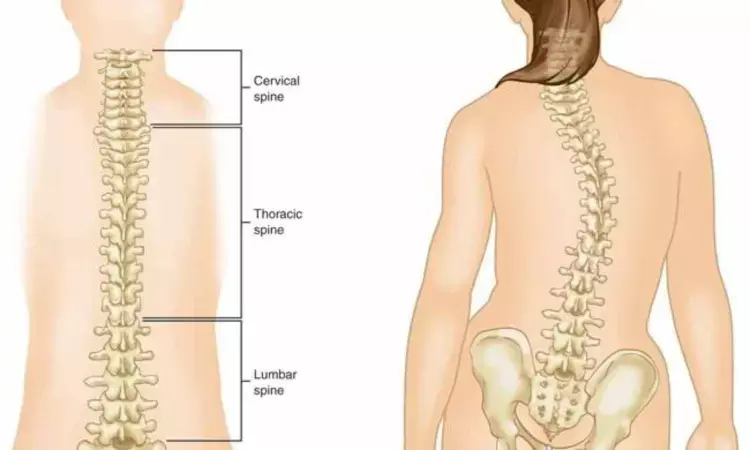- Home
- Medical news & Guidelines
- Anesthesiology
- Cardiology and CTVS
- Critical Care
- Dentistry
- Dermatology
- Diabetes and Endocrinology
- ENT
- Gastroenterology
- Medicine
- Nephrology
- Neurology
- Obstretics-Gynaecology
- Oncology
- Ophthalmology
- Orthopaedics
- Pediatrics-Neonatology
- Psychiatry
- Pulmonology
- Radiology
- Surgery
- Urology
- Laboratory Medicine
- Diet
- Nursing
- Paramedical
- Physiotherapy
- Health news
- Fact Check
- Bone Health Fact Check
- Brain Health Fact Check
- Cancer Related Fact Check
- Child Care Fact Check
- Dental and oral health fact check
- Diabetes and metabolic health fact check
- Diet and Nutrition Fact Check
- Eye and ENT Care Fact Check
- Fitness fact check
- Gut health fact check
- Heart health fact check
- Kidney health fact check
- Medical education fact check
- Men's health fact check
- Respiratory fact check
- Skin and hair care fact check
- Vaccine and Immunization fact check
- Women's health fact check
- AYUSH
- State News
- Andaman and Nicobar Islands
- Andhra Pradesh
- Arunachal Pradesh
- Assam
- Bihar
- Chandigarh
- Chattisgarh
- Dadra and Nagar Haveli
- Daman and Diu
- Delhi
- Goa
- Gujarat
- Haryana
- Himachal Pradesh
- Jammu & Kashmir
- Jharkhand
- Karnataka
- Kerala
- Ladakh
- Lakshadweep
- Madhya Pradesh
- Maharashtra
- Manipur
- Meghalaya
- Mizoram
- Nagaland
- Odisha
- Puducherry
- Punjab
- Rajasthan
- Sikkim
- Tamil Nadu
- Telangana
- Tripura
- Uttar Pradesh
- Uttrakhand
- West Bengal
- Medical Education
- Industry
3D-printed drill guides offer superior pedicle screw placement accuracy in congenital scoliosis surgery: study

Congenital scoliosis (CS) is a spinal deformity with a heterogeneous presentation, significantly affecting spinal development if untreated. Pedicle screw instrumentation is a common surgical intervention for CS, but the freehand technique often leads to inaccuracies, increasing the risk of complications. Recently, 3D-printed drill guides have emerged as a cost effective and accurate alternative to computer-assisted navigation systems.
The study by Paweł Łajczak et al systematically reviewed and compared the effectiveness of 3D-printed drill guides and the freehand technique in pedicle screw placement for children with CS.
A systematic search across five databases identified eligible studies comparing 3D-printed drill guides with freehand for pedicle screw instrumentation in CS patients. A total of three studies, involving 123 patients (60 in the 3D printing group and 63 in the freehand group), were included. Outcomes assessed included screw placement accuracy, complication rates, operation time, and surgical outcomes. Statistical analyses were conducted using a random-effects model in R software.
The key findings of the study were:
• 3D-printed drill guides demonstrated statistically significant improvements in screw placement accuracy (GR 0: OR 1.80, p = 0.015; GR 0 + 1: OR 3.69, p < 0.001) and reduced rates of severe screw misplacement (GR 3: OR 0.20, p = 0.019).
• Additionally, the 3D printing group experienced significantly fewer complications (OR 0.16, p = 0.02).
• No statistically significant differences were observed in operation time, operation time per screw, bleeding volume, or spinal curve correction outcomes between the two techniques.
The authors concluded – “This meta-analysis reveals the significant role of 3D-printed drill guides in improving the accuracy and safety of pedicle screw placement in congenital scoliosis surgery. While these guides demonstrate significant advantages over traditional FH methods in terms of screw accuracy and complication reduction, their impact on other surgical outcomes remains still unclear. Future efforts should aim to improve this technology, expand its accessibility worldwide, and validate its efficacy to other modalities. With further technology improvements, 3D printing has the potential to become a valuable tool in spine surgery, offering a cost-effective and customizable solution to complex challenges like CS.”
Further reading:
Comparison Between 3D-Printed Drill Guides and Freehand Surgery for Pedicle Screw Instrumentation in Children and Adolescents with Congenital Scoliosis: A Systematic Review and Meta-analysis Paweł Łajczak, Anna Łajczak Indian Journal of Orthopaedics (2025) 59:888–900 https://doi.org/10.1007/s43465-025-01401-w
MBBS, Dip. Ortho, DNB ortho, MNAMS
Dr Supreeth D R (MBBS, Dip. Ortho, DNB ortho, MNAMS) is a practicing orthopedician with interest in medical research and publishing articles. He completed MBBS from mysore medical college, dip ortho from Trivandrum medical college and sec. DNB from Manipal Hospital, Bengaluru. He has expirence of 7years in the field of orthopedics. He has presented scientific papers & posters in various state, national and international conferences. His interest in writing articles lead the way to join medical dialogues. He can be contacted at editorial@medicaldialogues.in.


